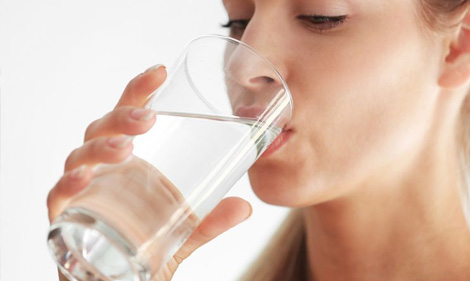

Challenges to Drinking Water Treatment

Much money and time have been expended developing necessary prevention and treatment methods to mitigate threats to our drinking water. Since the 1970’s, we’ve learned our efforts to produce safe drinking water can cause problems, but knowledge has provided some remedies for improvement.
Disinfection byproducts (DBPs) was the first major hurdle in producing safe drinking water. Public health improved when the use of chlorine added to water destroyed microbial infectious diseases that caused illness or death, in the untold thousands. However, it was discovered that this beneficial practice created another grave danger.
Natural organic matter (NOM), or broken-down organic matter, reacts with chlorine to form trihalomethanes (THM’s) determined to cause cancer in humans. Alternative disinfectants also have their problems in this area. One point of generation of these compounds was introducing chlorine to the raw water at the facility influent. Although this practice has benefits, along with immediate disinfection, the plant influent is where the highest concentration of NOM is present and generation of the DBP’s increases.
Many facilities seek to reduce the NOM concentrations by coagulation, flocculation, and sedimentation without disinfectants, achieving reduction of NOM, concurrent with treatment to remove turbidity already being practiced. Chlorine is applied to the filter influent, where NOM has been markedly reduced and disinfection and side benefits of pre-chlorination can be achieved.
The result of analysis for DBP’s must be ongoing and in accordance with state and federal standards.
Lead and copper (Pb and Cu) are contaminants that must be controlled. The action level for lead is 0.015 mg/L but with a Maximum Contaminant Level Goal of 0 mg/L. There is no safe level for lead in drinking water. Brain damage is the chief danger of this contamination.
If the action level for lead is exceeded in 90th percentile of samples analyzed, action is required to find its source, promulgate plans for removal of offending pipes, and begin immediate treatment for corrosion control. Increased sampling/analysis frequency will also be required. Concentrations of lead are due to corrosion of lead pipes, lead gaskets in delivery pipes, and lead-based solder used in copper plumbing. Problem systems have often failed to provide the most basic protection to the user. This requires keeping the water pH above 7.0 (around 7.5), keeping the water alkaline, and in a less corrosive state. Addition of corrosion control chemicals is necessary and must not be interrupted.
The matter must be handled by responsible water professionals without political interference and absence of concern for the expense required. The priority is public health, not money. You may reference articles on Flint and Benton Harbor, Michigan to see the results of politicians and “bean counters” taking command of treatment.
Copper is actually good for you, in small amounts. Elevated concentrations of copper cause acute symptoms of vomiting, diarrhea, stomach cramps, and nausea, all potentially lethal to people in compromised health. The 90th percentile rule applies to copper in excess of 1.3 mg/L. Exceedance will require the same actions as lead. Corroded copper pipe should be removed and replaced, and corrosion control implemented, preventing further leaching of copper into the water.
Synthetic organic compounds (SOCs) and volatile organic compounds (VOCs) cause many human health problems. Cancer, liver/kidney disease, heart disease, and neurological problems are but a few. SOCs include solvents and cleaners (as well as byproducts) and VOCs include pesticides, although pesticides are frequently analyzed as group unto themselves. These compounds are created by human activity, as many business and industrial activities use these chemicals. VOCs are volatile in that they gas or evaporate at room temperature, which has implications for air quality as well. SOCs do not evaporate, therefore, will not readily leave the water without treatment. Pesticides are commonly used around homes and in high volumes in agriculture.
Fuels, solvents, dry cleaning chemicals, plastics and their component chemicals, and industrial and household cleaners and degreasers are but a small list of the sources of these pollutants. Almost everything we encounter can harbor these compounds. A large part of the problem is improper handling and disposal of these chemicals, including chemical spills.
Treatment is achievable. One of the most common is activated carbon filtration. Over time, however, the carbon must be replaced with new and old carbon cleaned for possible reuse. Reverse osmosis and other systems can be successful also.
This is hardly a detailed description of these water challenges or even a complete list of all challenges. Consult the USEPA websites on these subjects for in depth information.